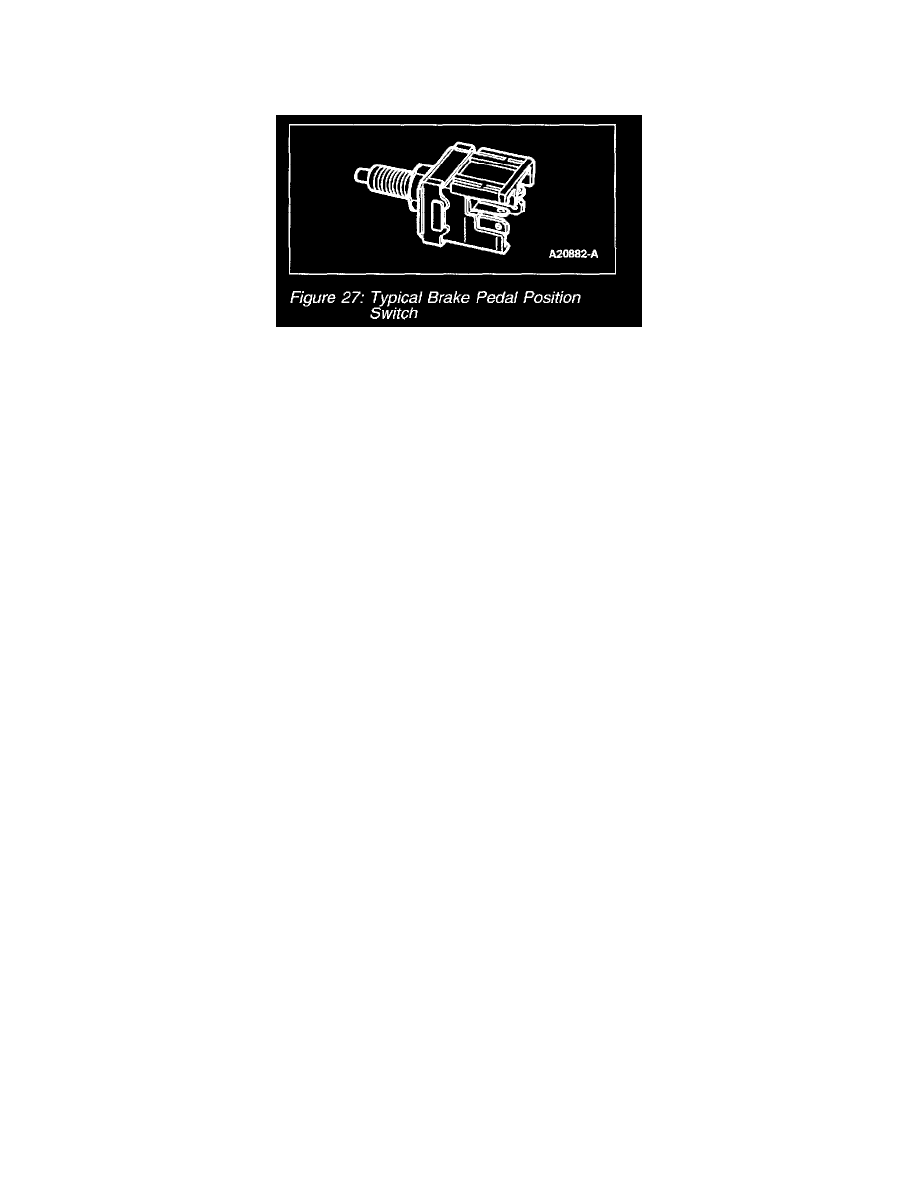E 150 V8-4.6L SOHC VIN W (2004)

Brake Switch (Cruise Control): Description and Operation
Brake Pedal Position Switch
BRAKE PEDAL POSITION SWITCH
Typical Brake Pedal Position Switch
The brake pedal position (BPP) switch (Figure 27) is used by the PCM to disengage the transmission torque converter clutch and on some applications
as an input to the idle speed control for idle quality and for vehicle speed control deactivation. Depending on the vehicle application the BPP switch can
be connected to the PCM in the following manner:
-
BPP switch is hard wired to the PCM supplying battery positive voltage (B+) when the vehicle brake is applied.
-
BPP switch is hard wired to a module (ABS, LCM or HEM), BPP signal is than broadcasted over the data link to be received by the PCM.
-
BPP switch is hard wired to the anti-lock brake (ABS)- traction control / stability assist module. The stability module will interpret the BPP switch
input along with other ABS inputs and generate an output called the Driver Brake Application (DBA) signal. The DBA signal is than sent to the
PCM and to other BPP signal users.
Note on applications where the BPP switch is hard wired to the PCM and stoplamp circuit, if all stoplamp bulbs are burned out (open), high voltage is
present at the PCM due to a pull-up resistor in the PCM. This provides fail-safe operation in the event the circuit to the stoplamp bulbs has failed.
